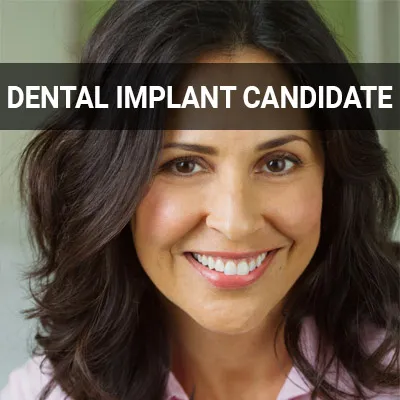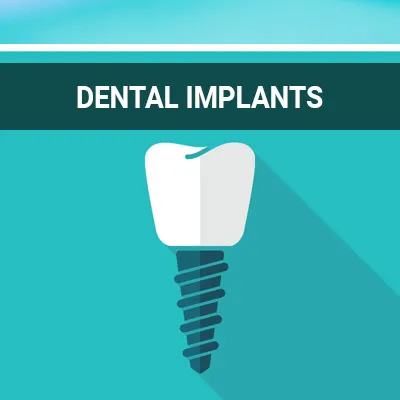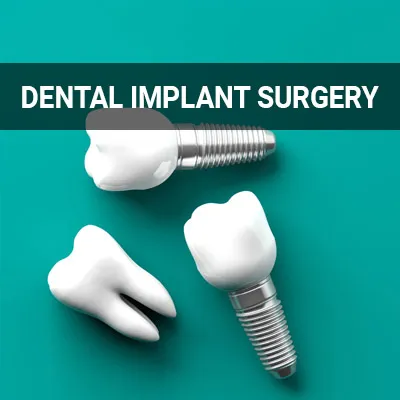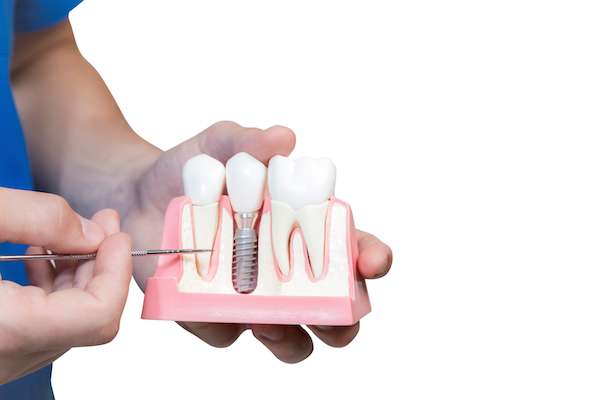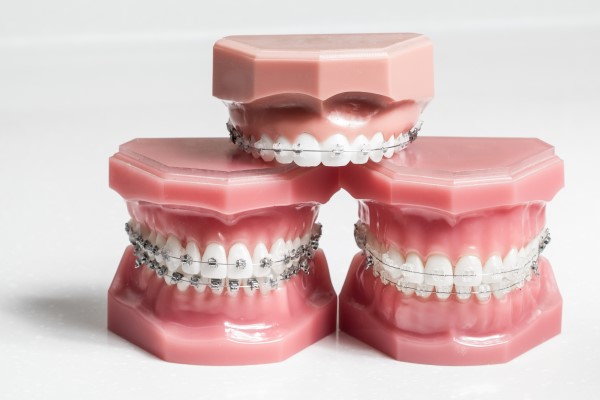The Dental Implant Procedure Houston, TX
Everyone deserves a beautiful smile and should feel confident in public. The dental implant procedure helps many regain confidence after tooth loss occurs. The process for dental implant placement has never been easier for patients, and many achieve an attractive smile within a few short months.
At our dentist office, we help patients through the dental implant procedure, from the initial consultation to providing follow-up care after treatment is complete. We also strive to educate each patient on the process and answer any questions we receive along the way.
If you are interested in learning more about the dental implant procedure, call Poindexter Dental, Inc. at (713) 244-5501 today and schedule a time to come in for your first visit.
An Overview of the Dental Implant Procedure
According to the Centers for Disease Control and Prevention, nearly 19% of adults aged 65 and over experience complete tooth loss (edentulism). Fortunately, a dental implant procedure has a high success rate. There are cosmetic, functional, and oral health benefits to this treatment that other teeth replacement options may not be able to provide.
Dental implants are placed either inside or on the jaw and serve as the root of the replacement tooth. Subsequently, the bone inside the jawbone is preserved and provides a more durable stabilization of the replacement tooth. The dental implant procedure is a series of steps to complete the dental implant and replacement tooth process, which typically involves preparation, the placement process, and follow-up care.
We encourage anyone interested in teeth replacement through dental implants to reach out to us for more information.
“Dental implants are placed either inside or on the jaw and serve as the root of the replacement tooth.”
How to Prepare for The First Implant Procedure
Each one of our patients may have a slightly different experience. However, there are certain steps we take to ensure that our patients are ready for the day of the procedure. The following is an overview of how to properly prepare for implant placement and make it through the early stages of the dental implant procedure.
The First Implant Consultation
The first visit is simple. The primary purpose is to help the patient make an informed decision about treatment, along with determining the type of treatment they prefer. The dentist may start by discussing the patient's goals for treatment, conducting an oral examination, and ordering dental X-rays to get a better idea as to what preparations the patient needs.
The dentist may also describe the difference between fixed and removable teeth replacement options. The patient can ask any questions during this time, as well. If both our team and the patient agree to move forward, then we can discuss the next steps to take in the process.
At-Home Preparation
While the first dental implant procedure may cause some anxiety, patients can reduce stress and nervousness by properly preparing at home the night before. Our team will provide a list of instructions before the day of the placement procedure, which may include avoiding certain foods or fasting.
We also encourage patients to shop for soft foods to have after the procedure in advance to make the recovery process more convenient. Although it may not be easy, patients need to get a decent night of sleep the night before the placement procedure.
How to Calm Fear and Anxiousness
Communication is essential when dealing with fear and anxiety before your dental implant placement procedure. We encourage patients to ask questions about the procedure, especially as it pertains to preparing ahead of time. We will gladly do all we can to make the process as easy and convenient as possible.
“While the first dental implant procedure may cause some anxiety, patients can reduce stress and nervousness by properly preparing at home the night before.”
The Dental Implant Procedure
Dental implant surgery involves replacing natural tooth roots with artificial roots using metal, screw-like posts that hold an artificial tooth, such as a crown or bridge. The type of surgery performed will depend on the type of implant and the condition of the patient's jawbone. This is discussed during the consultation appointment and the patient should have a good understanding of their procedure type prior to surgery.
The implant procedure typically consists of several stages and treatments with recovery periods in between. The process involves a series of steps:
- Damaged tooth removal
- Jawbone preparation (grafting), when needed
- Dental implant placement
- Bone growth and healing
- Abutment placement
- Artificial tooth placement
During the day of the procedure, the patient will be put under an anesthetic to eliminate pain or discomfort during and after the treatment. We make a small cut to open the gums and expose the bone underneath. Then, we drill holes into the bone to make space for the dental implant(s). The implant post is ready for the application of the artificial tooth replacement.
“The type of surgery performed will depend on the type of implant and the condition of the patient’s jawbone.”
Check out what others are saying about our dental services on Yelp: The Dental Implant Procedure in Houston, TX
Home Care After the Dental Implant Procedure
Many patients consider the recovery process following implant placement to be the most challenging time of the process, but it can be made more tolerable by following an appropriate aftercare routine. To recover quickly and minimize discomfort after implant placement, implement the following home care techniques:
- Stick to a soft diet. Avoid foods that are hard to chew, high in sugar, or high in carbohydrates. Also, avoid any beverages that may irritate the affected area, primarily drinking water.
- Practice good oral hygiene. Brush gently several times each day and use mouthwash as directed by the dentist. Gentle brushing reduces the risk of oral infection, gum inflammation, and increased discomfort.
- Avoid physical activity. Physical activity such as sports, weight lifting, and running, may aggravate the affected area. The risk of aggravating the affected area is especially high if one receives a blow to the face. Talk to the dentist about what activities patients need during recovery.
Proper home care is essential to a quick recovery. It might be ideal to miss work for a short amount of time after implant placement and give yourself time to make the necessary arrangements for a convenient recovery process.
“Many patients consider the recovery process following implant placement to be the most challenging time of the process, but it can be made more tolerable by following an appropriate aftercare routine.”
Questions Answered on This Page
Q. What is a dental implant procedure?
Q. How can I prepare for my first implant procedure?
Q. What happens during the dental implant procedure?
Q. What does the implant recovery process look like?
People Also Ask
Q. How does the bone grafting procedure work?
Q. How many follow-up appointments will you need post-op?
Q. How are dental implants used to replace missing teeth?
Q. How can I prepare for my first implant procedure?
Frequently Asked Questions
Q. How long does a dental implant procedure take?
A. Every patient is different, but it typically takes between four to eight months to complete all stages of the dental implant procedure. The dental implant must go through osseointegration, which involves the implant fusing with the surrounding bone. This process takes between three to six months.
Q. Is the dental implant procedure painful?
A. There is typically discomfort following the placement of the implant, although the procedure itself is generally not discomforting for the patient. To minimize discomfort, consider eating soft foods, practicing good oral hygiene, and taking a pain reliever that is recommended by your dentist.
Q. Will I have to make drastic changes to my lifestyle after a dental implant procedure?
A. Not really. Dental implants are artificial teeth that do not require excess oral hygiene. In many cases, the patient will only have to brush and floss their teeth like normal. Along with that, the patient will be able to continue eating most types of food with dental implants.
Q. Who is an ideal candidate for the dental implant procedure?
A. WebMD states that millions of Americans suffer tooth loss. Anyone who is not happy with their smile, oral health, or missing teeth should consider the benefits of the dental implant procedure. Patients should be willing and able to endure minor oral surgery to allow for proper placement of the implant.
Q. How long is the recovery period after dental implantation?
A. The average recovery time for dental implant surgery is between 6 to 8 months. However, cases vary from patient to patient and some conditions may require a longer period. Recovery also depends largely on the patient's adherence to oral hygiene practices.
Dental Implant Terminology
Call Us Today
Call us at 713-244-5501 or get in touch via email to learn more about the dental implant procedure or to schedule a time to come in for an initial consultation. Our friendly staff is willing and able to answer your questions and guide you through each step of the process.
Helpful Related Links
- American Dental Association (ADA). Glossary of Dental Clinical Terms. 2024
- American Academy of Cosmetic Dentistry (AACD). Home Page. 2024
- WebMD. WebMD’s Oral Care Guide. 2024
About our business, license, and website security
- Poindexter Dental, Inc. was established in 1956.
- We accept the following payment methods: American Express, Cash, Check, Discover, MasterCard, and Visa
- We serve patients from the following counties: Harris County
- We serve patients from the following cities: Houston, Southeast Houston, Clear Lake, Pasadena, Gulfgate, Third Ward, Pearland, Downtown Houston, South Houston and Medical Center Area
- TX (License #14351). View License Information and Specifics
- National Provider Identifier Database (1073545992). View NPI Registry Information
- Norton Safe Web. View Details
- Trend Micro Site Safety Center. View Details
Back to top of The Dental Implant Procedure



